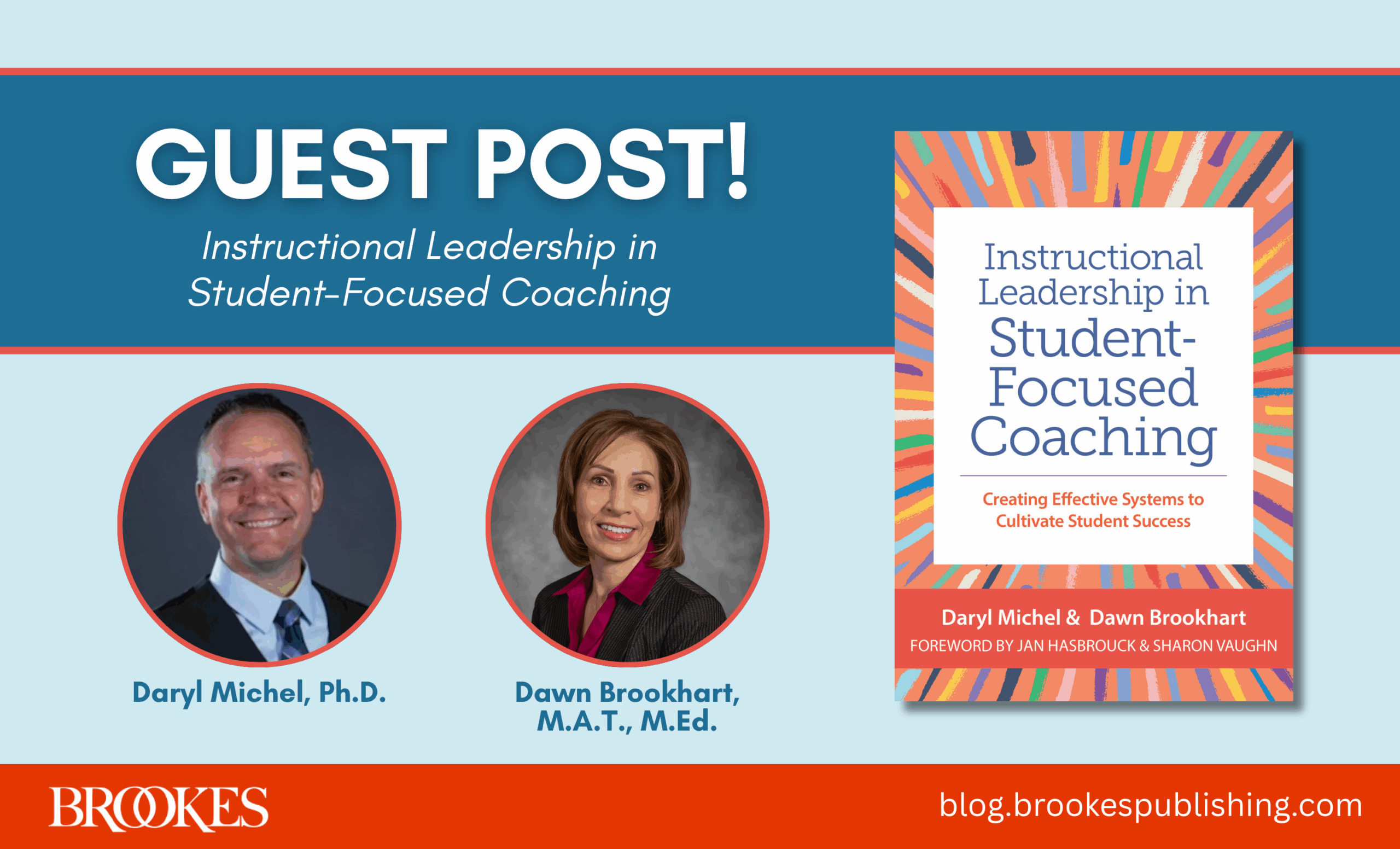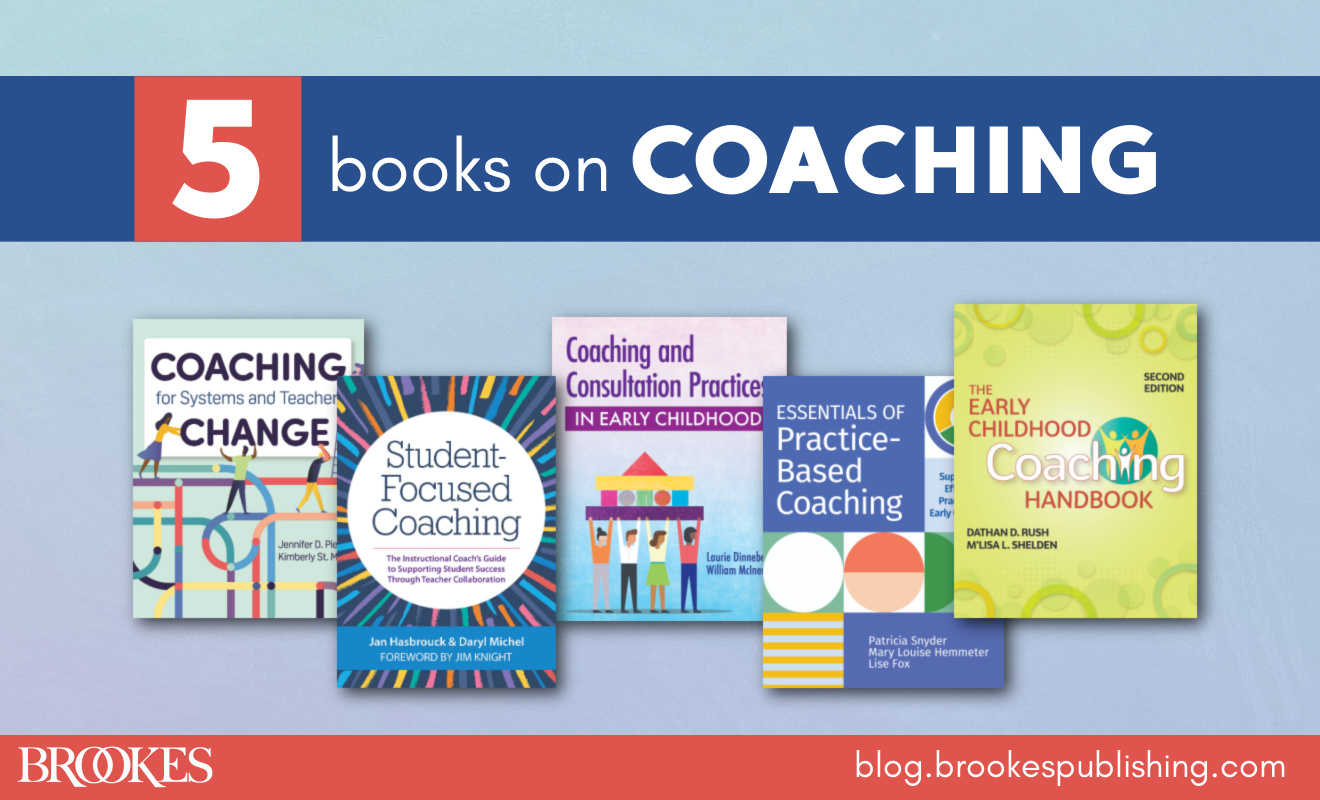Instructional Leadership in SFC: Why It Matters, What to Do
September 11, 2025
 Today’s guest post shares wisdom from Daryl Michel and Dawn Brookhart, authors of the upcoming book Instructional Leadership in Student-Focused Coaching. Building on Hasbrouck & Michel’s widely used guide Student-Focused Coaching, this practical new book shows educational leaders how to develop and lead a sustainable coaching model.
Today’s guest post shares wisdom from Daryl Michel and Dawn Brookhart, authors of the upcoming book Instructional Leadership in Student-Focused Coaching. Building on Hasbrouck & Michel’s widely used guide Student-Focused Coaching, this practical new book shows educational leaders how to develop and lead a sustainable coaching model.
In today’s ever-evolving educational landscape, coaching can’t succeed in a vacuum—and leadership can’t exist in isolation. Instructional leadership is the thread that ties effective coaching, strong teaching, and student success together. Without it, even the best coaching models can fall flat.
So, what does it mean to be an instructional leader in a coaching culture? And how can leaders foster real, lasting change in their schools or districts?
Let’s break it down.
The Shift We Need: Collective Leadership Through an Omnidirectional Approach
For too long, educational change has flowed in just one direction—either top-down, directed by policymakers and supervisors, or bottom-up, driven by dedicated educators in classrooms. The problem? One-directional change rarely sticks.
Top-down mandates often lack buy-in. Bottom-up efforts struggle without alignment or resources. The result is initiative fatigue and fragmented progress.
Collective Leadership Is the Path Forward
 Collective leadership calls for an omnidirectional approach to leading change—where leadership and communication flow across every level of the system:
Collective leadership calls for an omnidirectional approach to leading change—where leadership and communication flow across every level of the system:
- Top-down: Vision, structures, and resources
- Bottom-up: Teacher voice and classroom-based innovation
- Lateral: Peer collaboration and shared expertise
- Inside-out: A student-focused approach guiding every decision
In this model, leadership is not confined to titles. It’s a shared responsibility. Coaches, teachers, supervisors, and support staff all play a role in advancing the work. To truly achieve shared leadership, people must lead together, not in silos.
Two Core Themes That Drive Lasting Impact
In our upcoming book, Instructional Leadership in Student-Focused Coaching: Creating Effective Systems to Cultivate Student Success, we explore two essential themes that help leaders develop and sustain a high-impact coaching culture:
1. Modeling the Expectations—Including the Learning
If we want educators to embrace research- and evidence-based practices and continuous improvement, leaders must show the way. That means modeling not just technical strategies, but a mindset of reflection, growth, and shared learning.
Instructional leaders who model expectations:
- Engage in professional development and learning alongside their teams
- Reflect openly and seek feedback
- Demonstrate research- and evidence-based practices in action
- Lead complex change through collaboration—not control
This kind of leadership builds credibility and cultivates a culture of trust, curiosity, and high expectations.
2. Creating the Conditions to Enhance Teaching and Learning
Even the most skilled coaches need the right environment to succeed. Instructional leadership means building and protecting a culture where teaching and learning can thrive.
That includes:
- Creating the conditions and culture to implement and sustain a coaching model system-wide
- Establishing clear, open communication about roles and responsibilities among supervisors, coaches, and teachers
- De-implementing outdated or ineffective practices to make space for meaningful, research-based improvement
- Planning and executing professional development that ensures the successful transfer of evidence-based skills into daily instruction
- Using a structured Collaborative Problem-Solving Process to align teams, strengthen decision-making, and focus collective efforts
When these elements are in place, coaching is no longer isolated—it becomes an integrated, essential part of your school’s improvement strategy.
What Great Instructional Leaders Do
Instructional leadership is not about managing compliance—it’s about leading complex change. Effective leaders create the conditions for others to succeed by showing up, asking good questions, and modeling what matters.
Here are five essential qualities of strong instructional leaders:
1. They Lead with Purpose
They stay rooted in a clear vision that prioritizes equity, growth, and student achievement.
2. They Model What Matters
They demonstrate the learning they expect of others—engaging with research, reflecting on practice, and modeling high-impact strategies.
3. They Build Trust
They create psychologically safe spaces where feedback, risk-taking, and collaboration are valued.
4. They Empower Others
They believe that leadership lives at every level—and foster collective responsibility through shared voice and ownership.
5. They Focus on “Improving,” Not Just “Proving”
Rather than chasing quick wins or surface-level metrics, they build systems focused on continuous learning and lasting growth.
 Making Coaching Sustainable
Making Coaching Sustainable
To build a coaching model that endures, leaders must be intentional, strategic, and adaptive. Coaching success doesn’t depend on any one person—it depends on how the system is designed and supported.
Here’s what that looks like in practice:
Align Coaching With System Goals. Coaching must be integrated with school and district improvement plans—not added as an afterthought.
Prioritize Professional Development & Learning (PDL). Coaching should be ongoing, with structured time and support to ensure transfer of learning to classrooms through differentiated and sustained PDL.
Build Structures for Long-Term Success. From clear roles and expectations to supportive resources and routines, sustainability requires thoughtful planning.
Focus on Relationships and Purpose. Trust and shared goals are essential. Supervisors, coaches, and teachers must work in partnership, guided by a shared commitment to student outcomes.
 How Our Book Can Help
How Our Book Can Help
Instructional Leadership in Student-Focused Coaching offers a comprehensive roadmap for building a sustainable, system-aligned coaching model. Whether you’re launching coaching for the first time or looking to refine what’s already in place, you’ll learn how to:
- Model the expectations you want to see
- Create a culture of continuous improvement
- Align coaching with instructional priorities
- Clarify roles, communication, and collaboration
- Lead change through shared ownership—not top-down control
- Use the Collaborative Problem-Solving Process to guide collective action
Want to learn more?
Join us for an upcoming webinar where we’ll explore how to build the leadership capacity, culture, and systems that make coaching thrive. You’ll leave with strategies to:
- Lead with clarity and confidence
- Align leadership, coaching, and teaching
- Foster a shared vision for growth
- Build a culture where improvement is the goal—and coaching is part of everyday practice
Sign up for the Brookes Literacy Newsletter for updates on the webinar, the book release, and tools you can use to begin strengthening your system.
Let’s create the conditions for success—together.





Write a Comment
Your email address will not be published. Required fields are marked *
Post a Comment